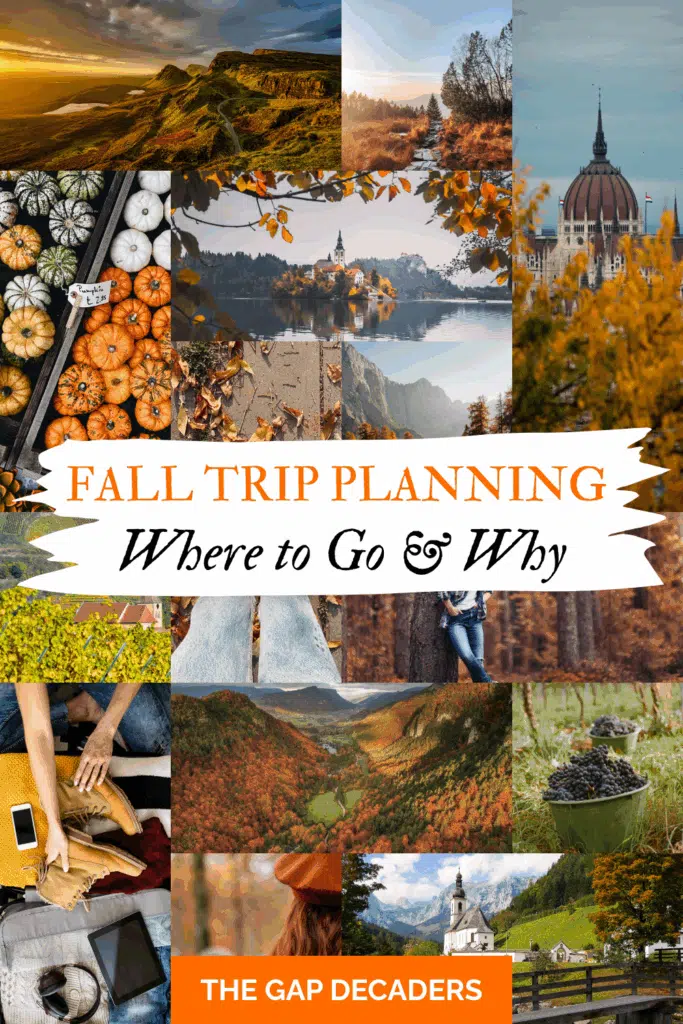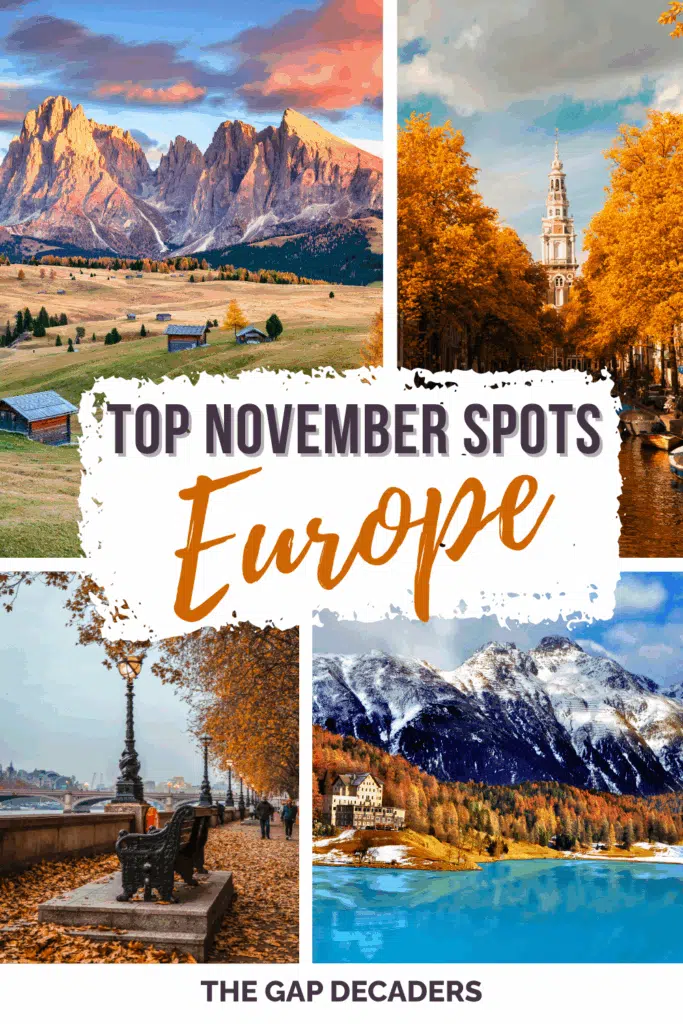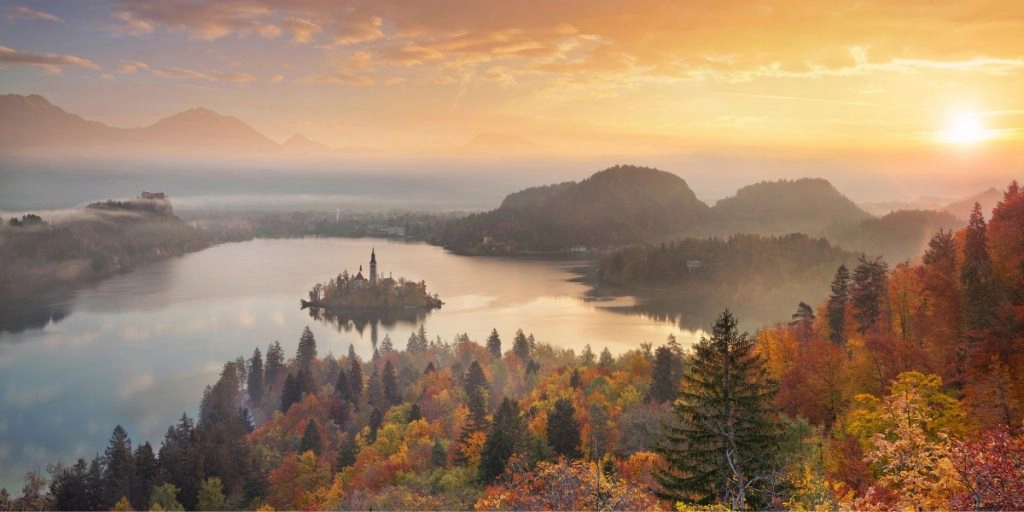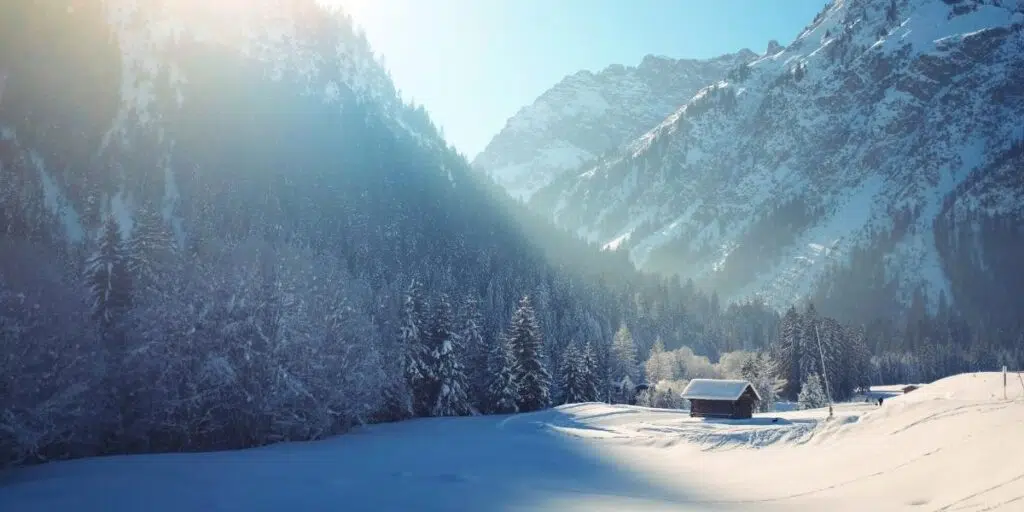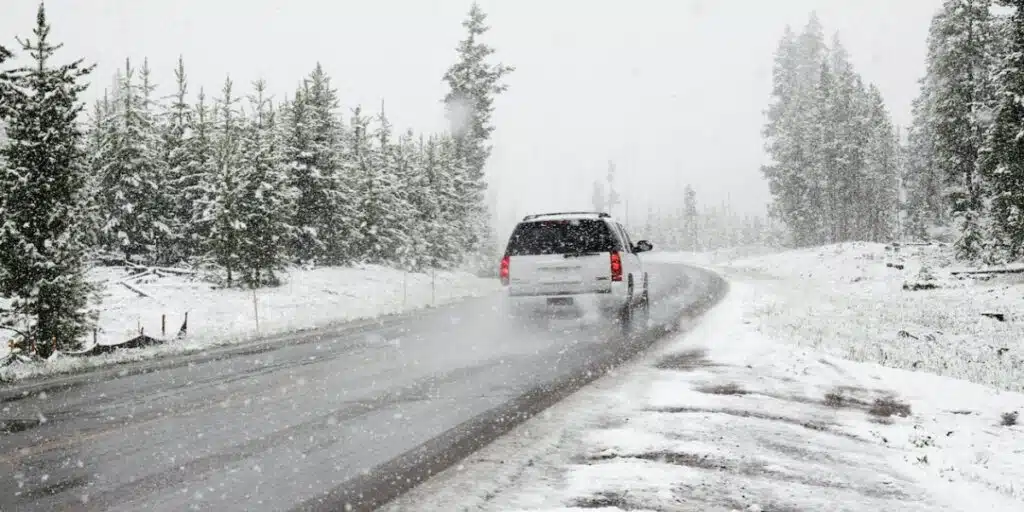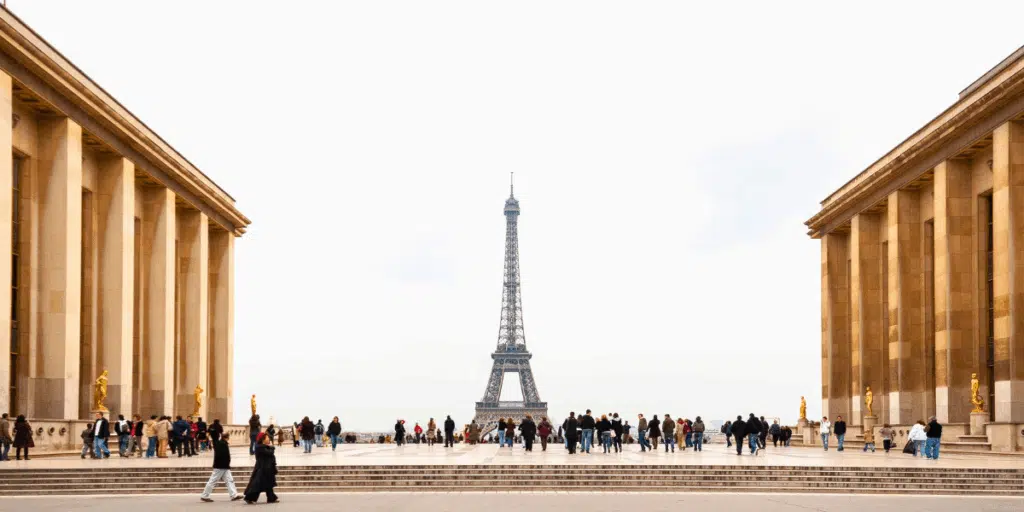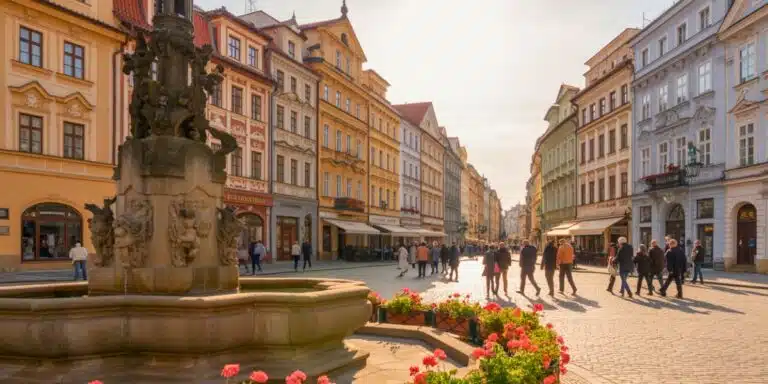This post may contain affiliate links, from which we earn an income. Click here to read our affiliate policy.
Autumn is one of the most beautiful and varied seasons to explore Europe. From the vineyard-covered hills of France to the fiery forests of Scandinavia, Europe in September, October, and November offers changing scenery, mild-to-crisp weather, and a cultural calendar rich with festivals, food, and fall foliage.
Whether you’re after the golden vineyards of Tuscany or the misty mornings of the Scottish Highlands, fall travel in Europe offers something for everyone. Here’s what to expect month by month – and how to prepare for weather, wardrobe, and where to go.
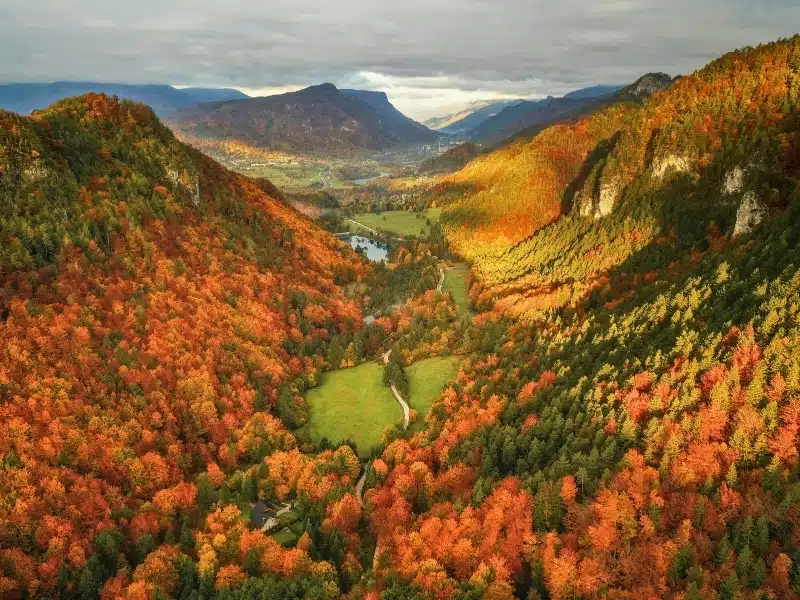
September: Golden Light & Late Summer Warmth
September is one of the best times to visit Europe for pleasant weather, smaller crowds, and events like Italy’s Vino al Vino wine festival and Germany’s early Oktoberfest celebrations.
Weather Overview
Europe in September is still basking in late-summer warmth. Southern countries like Spain, Portugal, Italy, and Greece often reach 24–30°C (75–86°F), while central Europe (France, Germany, Austria) sits comfortably at 18–24°C (64–75°F). Northern destinations (UK, Ireland, Scandinavia) average a cooler 14–18°C (57–64°F), with occasional rain showers.
Where to Go
Packing Tips
Pack breathable clothing like cotton shirts and light trousers, but include a sweater or light jacket for cooler mornings and evenings. Comfortable walking shoes are essential for exploring cities and countryside paths alike.
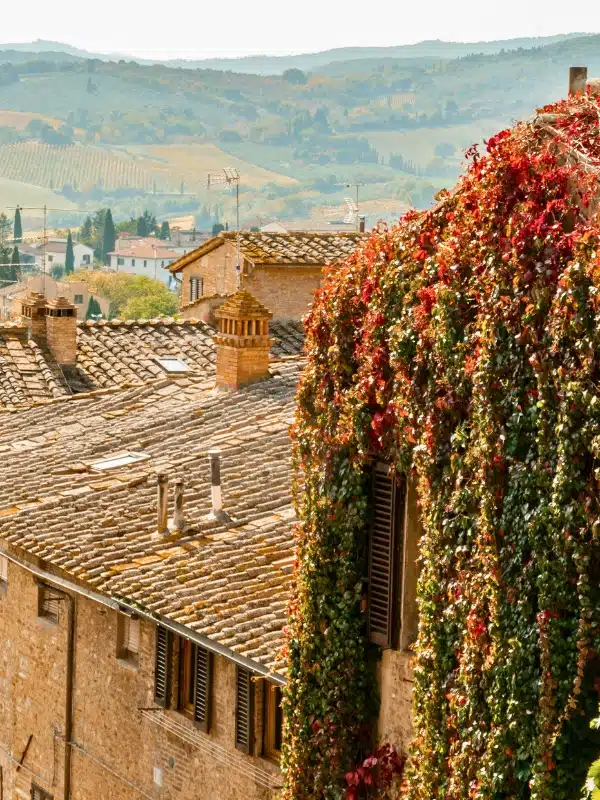
Make sure you have travel insurance you can trust for trips in Europe. We recommend True Traveller for their 5-star TrustPilot reviews, variety of cover options, best activities cover as standard, great prices, and excellent service.
October: Peak Foliage & Cozy Culture
October is a classic month for leaf-peeping, with dazzling foliage in the Black Forest, Scottish Highlands, and even urban parks like Paris’s Jardin du Luxembourg. Fall markets, food festivals, and fewer crowds enhance the travel experience.
Weather Overview
October travel in Europe reveals the heart of autumn. Southern Europe remains mild (18–24°C / 64–75°F), while central regions drop to 12–18°C (54–64°F), and the north cools further to 7–12°C (45–54°F). October brings crisp air, harvest festivals, and a riot of colour across the continent. The fall foliage peaks across much of central and eastern Europe, showcasing the classic Europe fall aesthetic and making it one of the most scenic times of year.
Where to Go
Packing Tips
Include layers such as long-sleeve shirts, knitwear, and a waterproof mid-weight jacket. Scarves, hats, and an umbrella are wise for unpredictable weather.
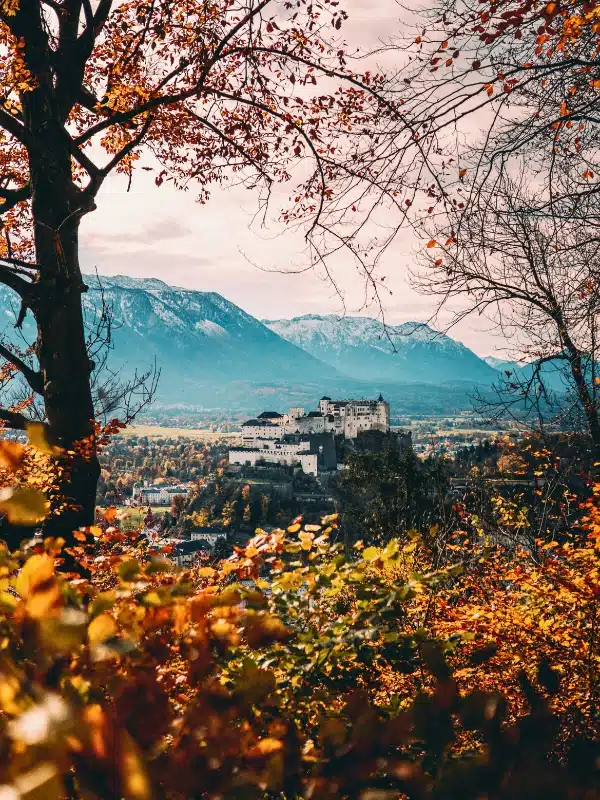
November: Quiet Charm & Festive Beginnings
November Europe travel is ideal for those seeking quiet, introspective experiences. It’s also when cities begin decorating for Christmas markets, giving travelers an early taste of the festive season.
Weather Overview
Europe in November is crisp and atmospheric. Mediterranean regions drop to 13–18°C (55–64°F), central Europe cools to 5–10°C (41–50°F), and northern and alpine areas often hover between 0–6°C (32–43°F), with early snow likely.
Where to Go
Packing Tips
Bundle up with a warm coat, waterproof boots, gloves, and layered outfits. Thermal underlayers are useful in the north, while the south remains manageable with sweaters and lighter jackets.

Other Low Season Trip Ideas
Regional Overview: Where to Go This Fall
Southern Europe (Italy, Spain, Greece, Portugal)
In early fall, Southern Europe remains sun-drenched and balmy, with daytime highs ranging from 24–30°C (75–86°F), ideal for open-air markets and coastal strolls. The sea is still warm enough for swimming, and golden sunlight bathes historic towns in a soft glow. September is the tail end of high season, meaning slightly fewer crowds but still lively with local energy.
This is also the time when the landscape is bustling with harvest activity—vineyards and olive groves come alive across Tuscany, Andalusia, and the Peloponnese. Local festivals celebrate the grape harvest with traditional music, wine tastings, and dancing. Outdoor dining thrives, especially in regions like Sicily and the Algarve, where grilled seafood and fresh produce are at their peak.
Savor the season with regional specialties: grilled sardines in Portugal, roasted chestnuts in Spanish plazas, and robust reds from Chianti or Santorini. Autumn is also ideal for exploring historic sites without the oppressive heat of midsummer. Whether you’re hiking through olive fields in Greece or watching the sunset over Lisbon’s hills, fall in Southern Europe offers a perfect blend of warmth, flavor, and tradition.
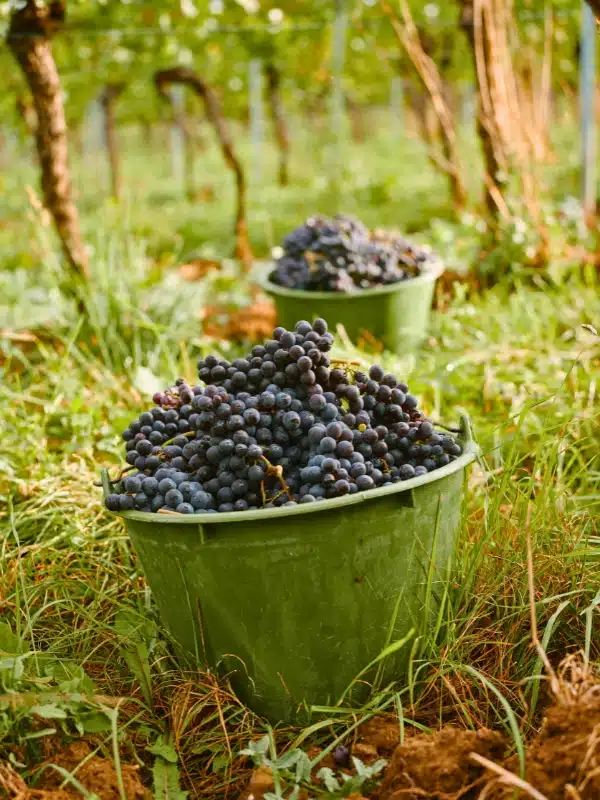
Central Europe (France, Germany, Austria, Switzerland)
October brings cooler temperatures and vibrant autumn colors to Central Europe, with highs around 10–18°C (50–64°F). Mountain valleys turn golden, and cities become canvases of red and orange leaves. It’s the perfect time for countryside drives, lakeside walks, and train rides through alpine forests. Crowds thin out compared to summer, giving you a more peaceful experience in popular destinations.
This is festival season at its best: think harvest celebrations in Alsace, pumpkin festivals in Austria, and of course, Oktoberfest in Munich. You’ll find farmers’ markets overflowing with mushrooms, root vegetables, and fresh cheeses. Wine lovers will appreciate the vendange (grape harvest) in regions like Burgundy and the Mosel, often accompanied by tastings and local events.
Lucerne and Salzburg shine in the crisp mountain air, with the first hint of snow sometimes dusting the peaks. Cafés become cozy retreats, perfect for sampling strudel or raclette. The cultural calendar is full, too—expect concerts, art shows, and fall-themed fairs that reflect each country’s heritage. In short, Central Europe in fall is a celebration of all the senses.
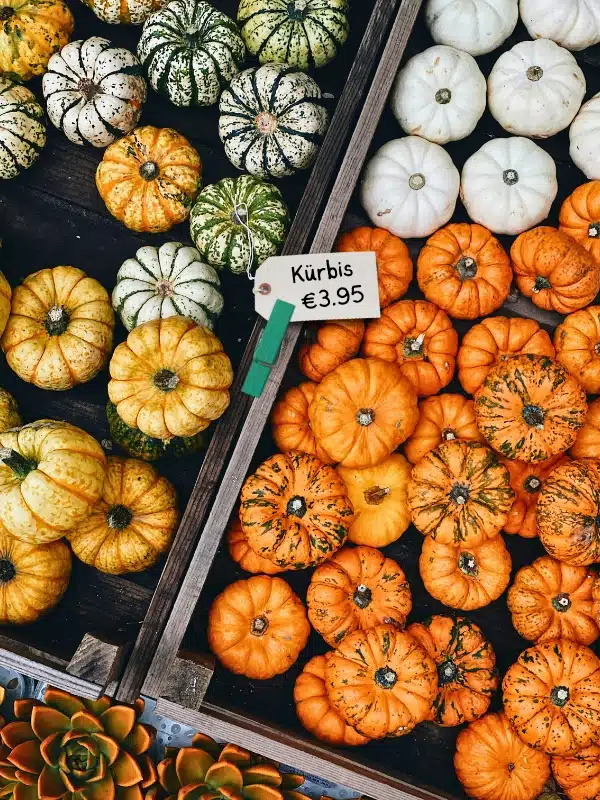
Northern Europe (UK, Ireland, Scandinavia)
Northern Europe enters autumn with a cool elegance—temperatures generally range from 8–16°C (46–61°F), and the atmosphere shifts to one of calm reflection. The dramatic landscapes of the Lake District or the fjords of Norway become cloaked in mist and fall color, offering a hauntingly beautiful backdrop for exploration.
This is a time for long walks in forests ablaze with orange and red, followed by warm pub meals or cozy café stops. In Scandinavia, the hygge lifestyle takes hold: think candles, soft blankets, and warm drinks shared indoors while the wind rustles outside. Stockholm’s archipelago and Copenhagen’s cobbled streets are especially magical in early fall, with fewer tourists and quieter scenes.
Foraging is a popular pastime, especially in rural areas where mushrooms, berries, and herbs are collected from the wild. Local restaurants highlight these seasonal ingredients in their menus. Meanwhile, cities like Bergen and Dublin host cultural events and intimate music festivals, often in historic settings. Northern Europe in fall is peaceful, introspective, and deeply atmospheric.

Eastern Europe (Hungary, Romania, Poland, Czech Republic)
Eastern Europe offers a more off-the-beaten-path experience in the fall, with cool weather ranging from 5–15°C (41–59°F) and a noticeable drop in tourist numbers. The mood becomes contemplative, as mist clings to medieval spires and riverbanks glow with fallen leaves. Cities like Kraków and Prague are still lively, but with fewer crowds and a more authentic local pace.
This is the season of harvest and heritage. Markets brim with seasonal produce—think pumpkins, apples, and jars of plum jam. Folklore festivals and craft fairs pop up in town squares, often featuring traditional music and regional costumes. In Romania and Hungary, autumn also means wine tastings, open-air cooking, and storytelling around bonfires.
Thermal baths become especially enticing as temperatures dip—Budapest’s famous spas offer warmth, light, and serenity. Lakeside retreats like Lake Balaton exude peace, while Transylvania’s rolling hills and castles come alive with eerie charm ahead of Halloween. Affordable prices and rich cultural layers make Eastern Europe a smart and soulful fall destination.
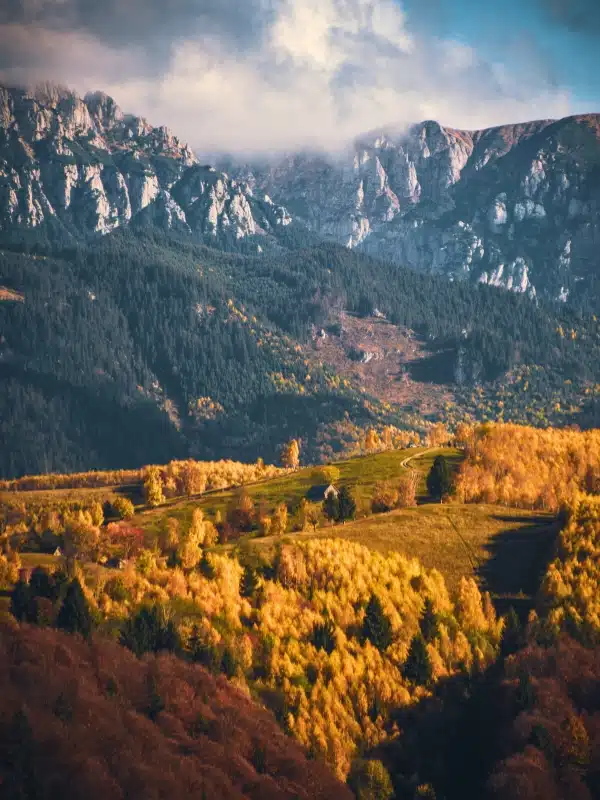
What to Pack for Fall Travel in Europe

Final Thoughts
Whether you crave the golden vineyards of southern France, the cultural coziness of October travel destinations like Vienna and Budapest, or the quiet romance of Europe in November, fall travel in Europe offers atmosphere in abundance. With fewer crowds, rich colours, and seasonal cuisine, it’s a perfect time to explore the continent with ease and authenticity.
No matter your itinerary, Europe autumn adventures are always better with a warm scarf, a weatherproof coat, and a camera ready to capture the magic of the season.
Are you looking for more Europe travel? Check out these top posts…
16 of the Best Travel Destinations in January
Our 60 Before 60 Travel Bucket List
The 16 Best Second Cities in Europe You Shouldn’t Miss
Adventure Travel Bucket List: 15 Epic Experiences in Europe
Travel Trends 2026: The Year of Mindful Escapes and Meaningful Journeys
The Ultimate Europe Travel Bucket List: 15 Classic Experiences to Inspire Your Next Trip
Love it? Pin it!
